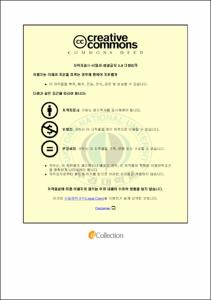스마트 필름용 소재의 개발 및 응용에 관한 연구
- Abstract
- The applications of window films have been expanded variously. The original property of window film is safety for broken glass. Now a day they have been studied for other applications such as cutting ultra violet, producing electric powder, energy saving, color changeable and protecting privacy.
Heat cutting window film can block the penetration of infrared rays from the sun. So it cause reducing a waste of energies from air conditioners and heaters. This property is acted by NIR(Near Infrared Ray) cutting materials.
Organic/inorganic hybrid material has been important due to its extraordinary properties, which arise from synergism between the properties of two matters. The preparation of functional coating film by sol-gel method has been focused on the control of chemical properties of surface by coating the hybrid material to various substrates such as glasses, metals, ceramics and polymers. Especially, functional coating film have superior properties such as high hardness.
Smart window films can change colors reversibly. These kinds of films are classified with the active and passive type. The active type of smart film was controled by voltage and called electrochromic device. The other type was controled by photo and called photochromic film.
In first study, to obtain functional flexible film with high hardness and transparency, organic/inorganic hybrid material was synthesized from colloidal silica, various silane, and methyl methacrylate, and then coated and polymerized on PET film by sol-gel method.
In second study, benzoin derivatives were synthesised with benzoin condensation, and then six kinds of symmetrical bis(dithiolene) nickel complex dyes were synthesised by using benzoin derivatives. Successful synthesis of intermediates and samples were confirmed with structural analysis by H-NMR, FT-IR, and GC-MASS. The optical property of dye was measured with UV-VIS spectroscopy.
In third study, inorganic photochromic materials were prepared with tungsten and other transition metal ions. After photochromic materials were coated on PET film by bar coater, the property of photochromic was searched by exposing ultra violet rays. Samples were researched with structural analysis by FT-IR. The optical property of dye was measured with UV-VIS spectroscopy.
- Issued Date
- 2012
- Awarded Date
- 2012. 2
- Type
- Dissertation
- Publisher
- 부경대학교
- Department
- 대학원 공업화학과
- Advisor
- 박성수
- Table Of Contents
- Contents
Contentsⅰ
List of Tablesⅴ
List of Figuresⅵ
Abstracⅷ
Chapter Ⅰ. 실리카 표면개질 및 하이브리드 코팅 소재의 제조 및 특성 1
1. 서 론 1
2. 이론적 배경 4
2.1 졸-겔 method 4
2.1.1 졸-겔 method의 역사 4
2.1.2 졸-겔 method 4
2.1.3 졸-겔 메카니즘 7
2.2 유-무기 나노 하이브리드 재료 12
2.2.1 유-무기 나노 하이브리드의 분류 14
2.2.2 하드코팅의 일반 특성 17
2.2.2.1 내마모성 하드코팅 17
2.2.2.2 발유・발수 특성 17
2.2.2.3 정전기방지 특성 18
2.2.2.4 기체 차단성 특성 18
3. 실 험 20
3.1 시약 20
3.2 콜로이드 실리카의 표면개질 23
3.3 실리카/PMMA 하이브리드 졸의 제조 26
3.3.1 실란이 치환된 CS와 MMA를 이용한 하이브리드 졸의 제조 26
3.4 코팅 막 제조 27
3.5 측정 및 분석 27
3.5.1 실리카/PMMA 하이브리드 졸의 측정 및 분석 27
3.5.2 실리카/PMMA 하이브리드 필름의 측정 및 분석 28
4. 결과 및 고찰 29
4.1 실리카 표면개질 29
4.1.1 실리카 표면개질 특성 29
4.1.2 표면전하 특성 34
4.1.3 형태학적 분석 37
4.1.4 열적 특성 44
4.2 실리카/PMMA 하이브리드 필름 46
4.2.1 실리카/PMMA 하이브리드 졸의 특성 46
4.2.2 형태학적 특성 49
4.2.3 열적 특성 53
4.2.4 분광학적 특성 57
4.2.5 접착력 및 표면경도 특성 60
5. 결 론 62
참고문헌 63
Chapter II. 디티올렌계 금속 착화합물 유도체의 합성 및 이의 광학적 특성 응용에 관한 연구 65
1 . 서론 65
2 . 이론적 배경 67
2.1 적외선 파장의 물리적 특성 67
2.2 근적외선 흡수 색소 73
2.3 Dithiolene Metal complex 76
2.3.1 Dithiolene Metal Complex의 특징 77
2.3.2 Dithiolene Metal Complex의 종류 80
2.4 열 차단 필름 82
2.5 Microwave Technology 84
2.5.1 유전체 손실기구 85
2.5.2 반응기구에 따른 마이크로파 영향 88
2.5.3 전이상태 위치에 따른 마이크로파 영향 89
2.5.4 용매의 종류에 따른 마이크로파 영향 90
3 Benzoin 유도체 합성의 합성 91
3.1 재래식 및 마이크로파 합성 장치 93
3.2 Benzoin의 합성 95
3.2.1 출발물질 및 분석 95
3.2.2 합성 95
3.3 Anisoin의 합성 96
3.3.1 출발물질 및 분석 96
3.3.2 합성 96
3.4 4,4'-chlorobezil의 합성 96
3.4.1 출발물질 및 분석 96
3.4.2 합성 97
3.5 4,4'-tert butyl benzoin의 합성 97
3.5.1 출발물질 및 분석 97
3.5.2 합성 97
3.6 결과 및 고찰 100
3.6.1 구조분석 102
3.6.2 합성수율 103
3.6.3 질량분석 104
4. Bis(dithiolene) nickel complex의 합성 105
4.1 Dithiolene Ni-complex 유도체의 합성 107
4.1.1 출발물질 및 분석 107
4.1.2 합성 107
4.2 결과 및 고찰 110
4.2.1 구조분석 110
4.2.2 합성수율 112
4.2.3 열분석 113
4.2.4 광학 특성 115
5. 결론 118
참고문헌 119
Chapter Ⅲ 텅스텐 산화물의 포토크로믹 현상에 관한 연구 122
1. 서론 122
2. 이론적 배경 124
2.1 텅스텐 124
2.2 전기변색 특성 125
2.3 광촉매 효과 128
2.4 광변색성 유기물질 129
2.5 광변색 무기물 132
3. 실험 133
3.1 시약 133
3.2 실험방법 133
3.2.1 텅스텐 산 합성 133
3.2.2 전이금속이 첨가된 텅스텐 산 합성 133
3.3 필름 제조 134
3.4 측정 장치 134
3.5 결과 및 고찰 135
3.5.1 구조 분석 135
3.5.2 분광학적 특성 136
4. 결론 139
참고문헌 140
Chapter Ⅳ 총 괄 결 론 142
- Degree
- Doctor
- Files in This Item:
-
-
Download
 스마트 필름용 소재의 개발 및 응용에 관한 연구.pdf
기타 데이터 / 4.94 MB / Adobe PDF
스마트 필름용 소재의 개발 및 응용에 관한 연구.pdf
기타 데이터 / 4.94 MB / Adobe PDF
-
Items in Repository are protected by copyright, with all rights reserved, unless otherwise indicated.